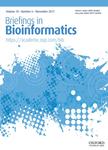版权所有:内蒙古大学图书馆 技术提供:维普资讯• 智图
内蒙古自治区呼和浩特市赛罕区大学西街235号 邮编: 010021

作者机构:SUNY Albany Dept Biol 1400 Washington Ave Albany NY 12222 USA SUNY Albany RNA Inst 1400 Washington Ave Albany NY 12222 USA SUNY Albany Dept Math & Stat 1400 Washington Ave Albany NY 12222 USA
出 版 物:《BRIEFINGS IN BIOINFORMATICS》 (Brief. Bioinform.)
年 卷 期:2025年第26卷第1期
页 面:bbaf005页
核心收录:
学科分类:0710[理学-生物学] 07[理学] 09[农学]
基 金:National Institutes of Health [R01DE031213, R01DE030927, S10OD028600] National Science Foundation [1636933, 2111080, 1920920]
主 题:multi-view machine learning fluorescence imaging biological spectral unmixing spectral overlap
摘 要:The accuracy of assigning fluorophore identity and abundance, known as spectral unmixing, in biological fluorescence microscopy images remains a significant challenge due to the substantial overlap in emission spectra among fluorophores. In traditional laser scanning confocal spectral microscopy, fluorophore information is acquired by recording emission spectra with a single combination of discrete excitation wavelengths. However, organic fluorophores possess characteristic excitation spectra in addition to their unique emission spectral signatures. In this paper, we propose a generalized multi-view machine learning approach that leverages both excitation and emission spectra to significantly improve the accuracy in differentiating multiple highly overlapping fluorophores in a single image. By recording emission spectra of the same field with multiple combinations of excitation wavelengths, we obtain data representing different views of the underlying fluorophore distribution in the sample. We then propose a multi-view machine learning framework that allows for the flexible incorporation of noise information and abundance constraints, enabling the extraction of spectral signatures from reference images and efficient recovery of corresponding abundances in unknown mixed images. Numerical experiments on simulated image data demonstrate the method s efficacy in improving accuracy, allowing for the discrimination of 100 fluorophores with highly overlapping spectra. Furthermore, validation on images of mixtures of fluorescently labeled Escherichia coli highlights the power of the proposed multi-view strategy in discriminating fluorophores with spectral overlap in real biological images.